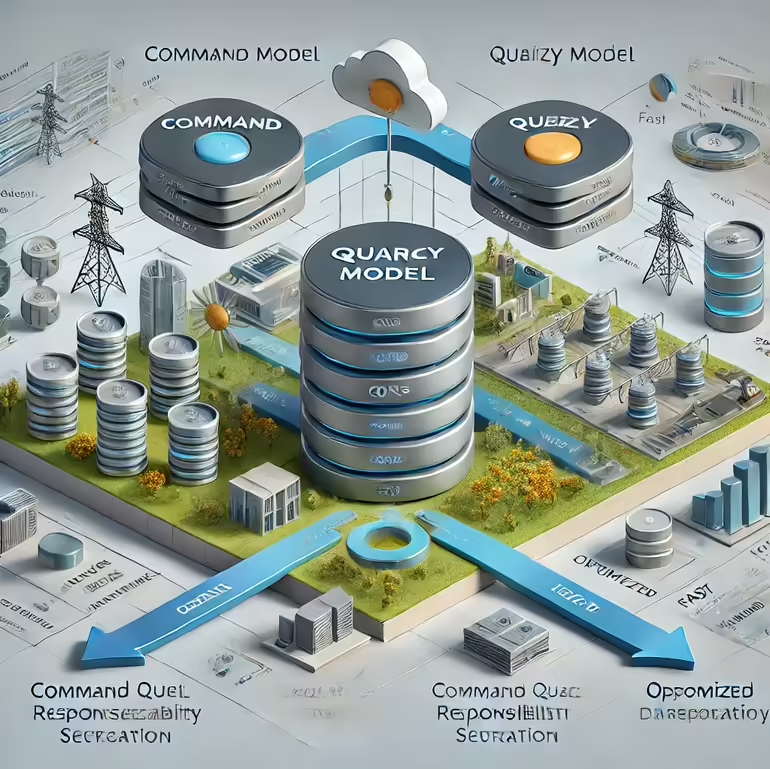In the relentless pursuit of high-performance, scalable, and maintainable software systems, traditional architectural patterns often hit a wall. As applications grow in complexity and user demand, the monolithic “one-size-fits-all” database approach can become a bottleneck. This is where CQRS (Command Query Responsibility Segregation) emerges as a powerful architectural pattern, offering a fundamental shift that separates how data is written from how it’s read. This segregation unlocks unprecedented levels of scalability, performance, and flexibility, making it a critical consideration for modern enterprises and a valuable skill for tech talent.
For Enterprise Leaders: How Does CQRS Drive ROI and Future-Proof Your Systems?
How Does CQRS Solve Scalability Bottlenecks and Enhance System Responsiveness?
Many applications, especially those with heavy user interaction like e-commerce platforms or real-time dashboards, experience significantly more read operations (queries) than write operations (commands). In a traditional single-model system, both reads and writes contend for the same database resources, leading to performance degradation under load. CQRS directly addresses this by:
- Independent Scaling: It allows you to optimize and scale your “write” model (for commands that change state) and your “read” model (for queries that retrieve data) independently. If your system has 10x more reads than writes, you can allocate more resources to the read model without impacting the write performance, ensuring faster response times for users.
- Optimized Data Stores: You can choose specialized data stores for each model. For instance, the command model might use a relational database optimized for transactional integrity, while the query model might use a highly denormalized NoSQL database or a search index (like Elasticsearch) for lightning-fast reads and complex reporting.
- Improved Responsiveness: By decoupling complex read queries from transactional writes, the system remains responsive even during periods of heavy command traffic, significantly enhancing user experience and operational efficiency.
This architectural flexibility ensures your systems can handle immense loads, critical for maintaining business continuity and customer satisfaction during peak periods.
How Does CQRS Improve Maintainability and Support Complex Business Logic?
As business requirements evolve and application domains become more intricate, monolithic systems can become rigid and difficult to change. CQRS, often paired with Domain-Driven Design (DDD), promotes a clearer separation of concerns:
- Simplified Models: By segregating responsibilities, each model (command and query) can be simpler and more focused on its specific task. The command model focuses on business rules and state changes, while the query model focuses on data retrieval. This reduces complexity within each component.
- Independent Development: Teams can develop and deploy changes to the command or query side independently, accelerating development cycles and reducing the risk of introducing bugs. This agility is vital for responding quickly to market demands.
- Enhanced Auditability & Debugging (especially with Event Sourcing): While not strictly part of CQRS, it’s often combined with Event Sourcing, where every change is recorded as an immutable event. This provides a complete, auditable history of all system actions, invaluable for regulatory compliance, troubleshooting, and understanding past system behavior.
Curate Partners understands that adopting advanced architectural patterns like CQRS requires not just technical prowess but also strategic alignment with business objectives. We help enterprises assess their needs, mitigate risks, and implement robust CQRS solutions, ensuring their architecture supports long-term growth and innovation.
For Software Professionals: How Can CQRS Enhance Your Skills and System Design Capabilities?
How Does CQRS Challenge and Enhance Your Software Design Skills?
For Software Architects, Backend Developers, and Data Engineers, delving into CQRS is a significant step forward in mastering modern system design. It encourages a shift in thinking from traditional CRUD operations:
- Thinking in Commands & Events: You learn to model business operations as explicit commands and system changes as immutable events, leading to a deeper understanding of domain logic and better system expressiveness.
- Designing for Asynchronous Processes: CQRS often involves asynchronous communication between the command and query sides (e.g., via message queues), requiring proficiency in designing robust, fault-tolerant distributed systems.
- Database Diversification: You gain experience working with and optimizing different types of data stores (relational, NoSQL, search indexes) for specific purposes, broadening your expertise beyond single database solutions.
- Microservices Alignment: CQRS naturally complements microservices architectures by providing clear boundaries and communication patterns between services, making it easier to build and scale independent components.
Mastering CQRS equips you with the architectural patterns needed to tackle the most demanding enterprise applications.
What Career Opportunities Does Expertise in CQRS Unlock?
As organizations increasingly seek to build highly scalable, performant, and resilient applications, professionals with CQRS expertise are in high demand. This skill set is particularly valuable for:
- Software Architects: Designing complex, distributed systems that leverage CQRS for scalability and maintainability.
- Senior Backend Developers: Implementing command handlers, event publishers, and query models in high-performance applications.
- Distributed Systems Engineers: Building and managing the messaging infrastructure and data synchronization between command and query sides.
- Data Engineers: Designing efficient read models and data pipelines that power analytical queries derived from command-side operations.
- Domain-Driven Design Practitioners: Applying CQRS as an architectural tactic within a DDD context to create robust domain models.
Proficiency in CQRS demonstrates a sophisticated understanding of advanced software architecture, making you a highly desirable candidate for cutting-edge development projects that demand high scalability and intricate business logic. Curate Partners actively connects skilled talent with innovative companies looking to implement or optimize CQRS-based solutions.
Conclusion
CQRS is not a silver bullet, but for complex, high-performance applications with distinct read and write demands, it offers a transformative approach to scalability, responsiveness, and maintainability. For enterprises, it translates into a robust, future-proof architecture that drives business value. For software professionals, it represents a significant advancement in architectural design skills, unlocking new career opportunities.



